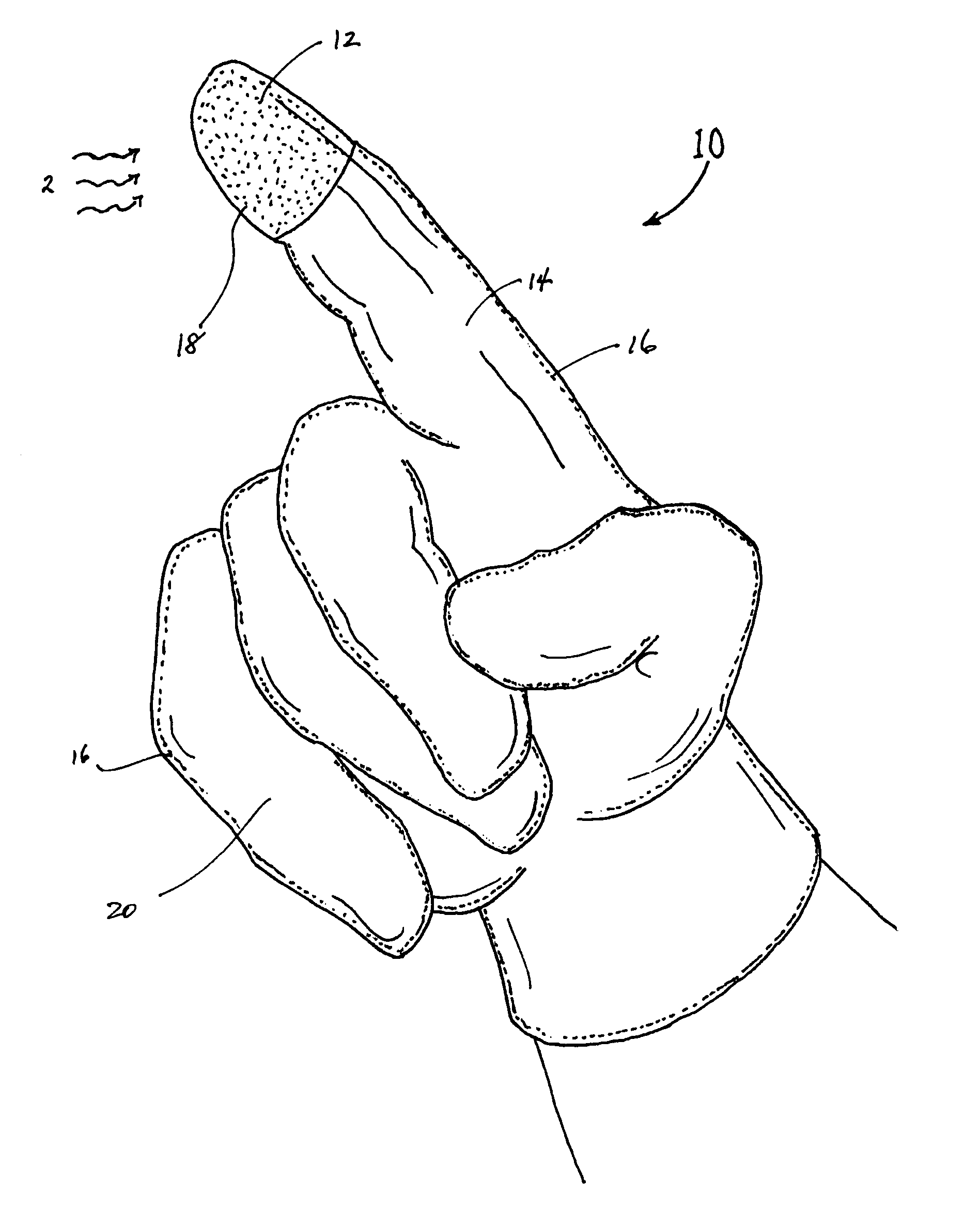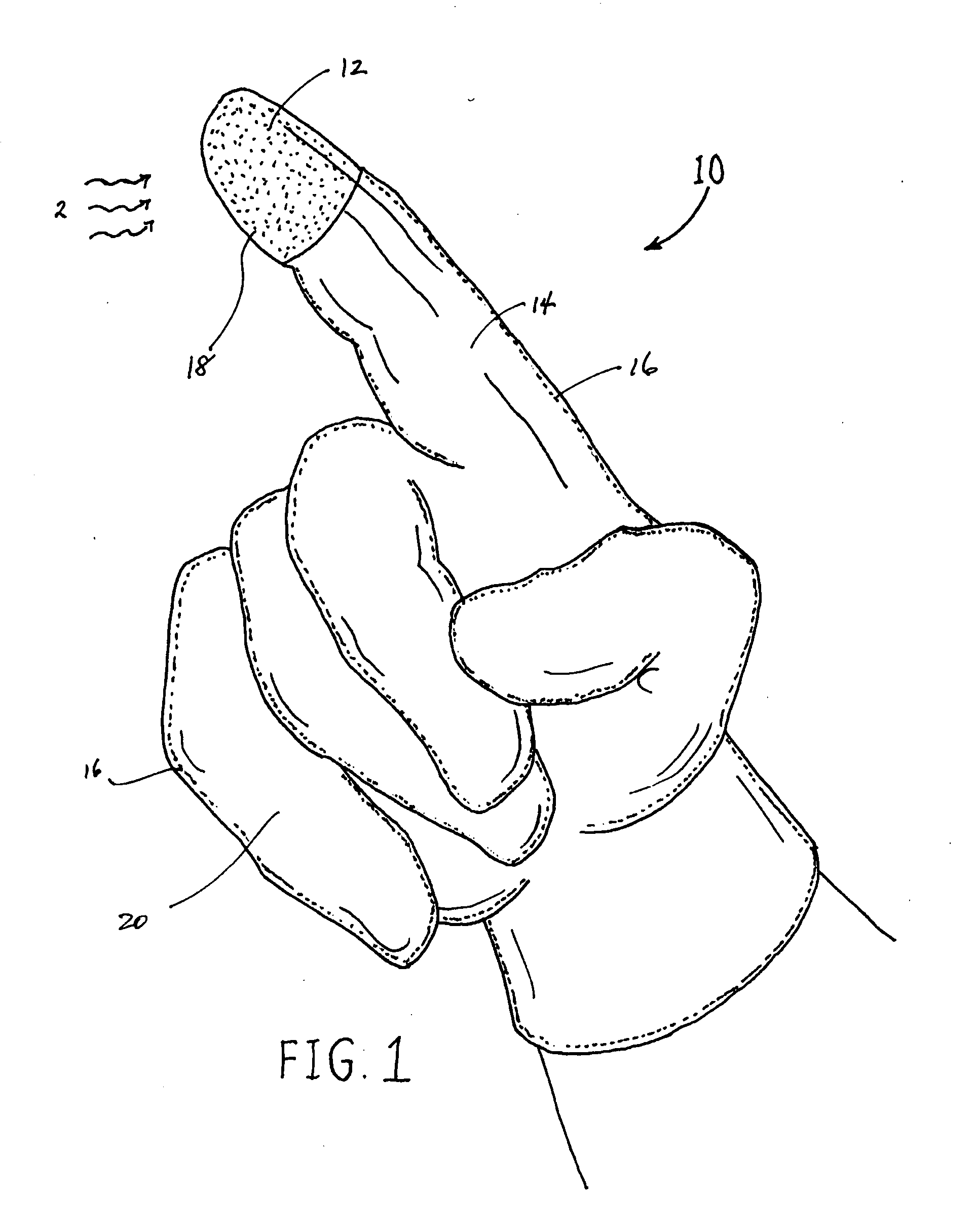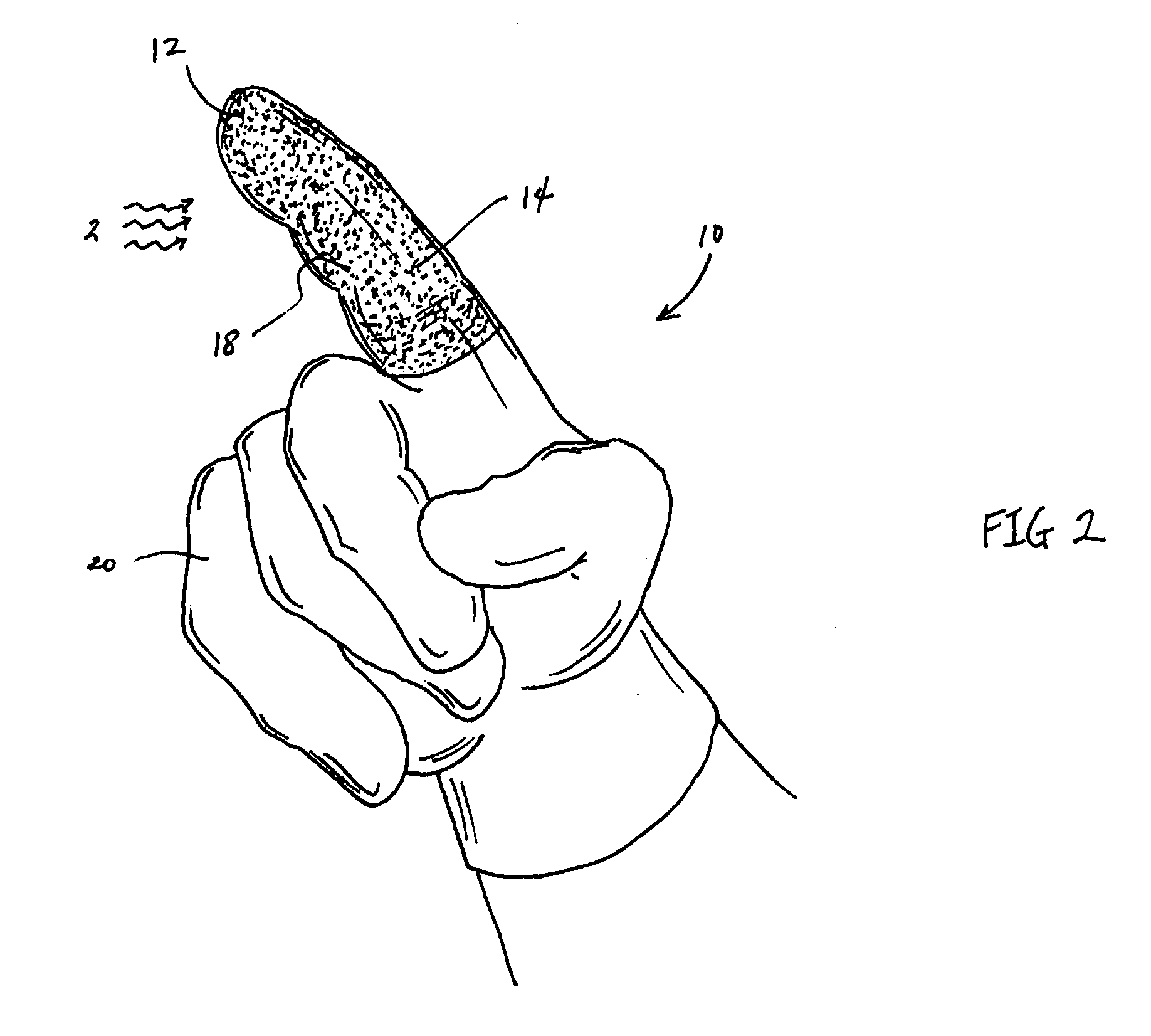Thermochromic responsive elastic polymer substrate
a technology of elastic polymer and polymer substrate, which is applied in the direction of temperature measurement in household appliances, instruments, catheters, etc., can solve the problems of undesirable additional cost of such a post-treatment step, color flaws on the surface, and undesirable lack of resiliency and durability
- Summary
- Abstract
- Description
- Claims
- Application Information
AI Technical Summary
Problems solved by technology
Method used
Image
Examples
example 1
[0077]As a specific example of an embodiment of the foregoing, a temperature responsive elastic color changing article was produced as follows. First, a base latex compounding emulsion was produced using Synthomer in deionized water. Synthomer is a nitrile rubber latex, specifically a carboxylated butadiene-acrylonitrile rubber latex, available from Synthomer Ltd. of Harlow, Great Britain. The base latex compounding emulsion additionally included about 1 weight percent ammonia, about 2 weight percent curing / crosslinking agent, and about 1 weight percent kaolin clay as a filler and opacifier.
[0078]For instance, 3 grams of Reichardt's dye powder, available from Aldrich Chemical Co. Milwaukee Wis., was added to about 250 milliliters of the latex compounding emulsion and mixed together by stirring to form a latex compounding emulsion having about 1 weight percent of the reverse-thermochromic pigment ingredient.
[0079]Next, a cylindrical-shaped former was heated to about 90° C. and dipped...
example 2
[0081]In making the gloves, we used a standard glove porcelain former that was dipped into a standard CaNO3 coagulant and then dipped into a nitrile solution containing Reichardt's dye. The dye was added to the solution at a concentration of approximately 0.2%. The pH of the dye solution was adjusted using KOH to a final pH of approximately 10.0, and a small amount (approximately 5 mL) of surfanol was added to the solution to enhance solubility of the Reichardt's Dye. Addition of the KOH caused a color change from white to pink. Presence of a base can modulate or alter the color changes of the polymeric substrate material before the thermochromic shift. After dipping the former into this mixture, standard nitrile glove making procedure was followed. It was noticed that drying in the oven at about 70° C. induced a color change to a very dark pink, but that the light color was restored upon cooling to room temperature. An additional glove sample was made by adding 0.2% Reichardt's dye...
example 3
[0082]It is worth noting that previous attempts to incorporate Reichardt's dye into polymer melts (using an extruder for instance) or onto other substrates or polymers have not resulted in observation of a reversible thermochromic shift. For example, Reichardt's dye (1%) was added to polyethylene resin and extruded to make a film that was blue in color. This film does not undergo a color change when exposed to heat. Similarly, previous studies which coated Reichardt's dye onto various substrates such as nonwoven spunbond-meltblown-spunbond (SMS) materials, fibrous sheets, paper, or woven cloth did not result in any observable thermochromism.
[0083]The solvatochromic nature of Reichardt's dye leads to different colors depending on the solvent environment. Dissolution of Reichardt's dye into certain solvents (such as glycerol, methanol, etc) results in a red color, while dissolution into other solvents (such as acetonitrile, isopropanol, etc) result in a bluish / purplish color. When sol...
PUM
| Property | Measurement | Unit |
|---|---|---|
| color wavelength | aaaaa | aaaaa |
| color wavelength | aaaaa | aaaaa |
| color wavelength | aaaaa | aaaaa |
Abstract
Description
Claims
Application Information
 Login to View More
Login to View More - R&D
- Intellectual Property
- Life Sciences
- Materials
- Tech Scout
- Unparalleled Data Quality
- Higher Quality Content
- 60% Fewer Hallucinations
Browse by: Latest US Patents, China's latest patents, Technical Efficacy Thesaurus, Application Domain, Technology Topic, Popular Technical Reports.
© 2025 PatSnap. All rights reserved.Legal|Privacy policy|Modern Slavery Act Transparency Statement|Sitemap|About US| Contact US: help@patsnap.com



